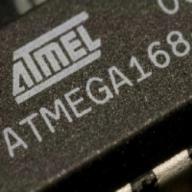-the name of the element
-the symbol of the element
-the atomic number of the element
-the position of the element
-the electron diagram of the element
-the relative atomic mass of the element
-the physical properties of the element(at least 2)
-the chemical properties of the element(at least 1)
-daily life applications of the element
-the extraction methods of the element
chemistry project___platinum
2014-02-04 7:16 am
回答 (4)
2014-02-04 10:47 pm
✔ 最佳答案
the name of the element: platinum the symbol of the element: Pt
the atomic number of the element:78
the electron diagram of the element
圖片參考:http://0.tqn.com/d/chemistry/1/0/H/I/1/Platinum.jpg
the relative atomic mass of the element:195
the physical properties of the element(at least 2):
platinum is silver-white in color, lustrous, ductile, and malleable .
the chemical properties of the element(at least 1):
it dissolves in hot aqua regia to give aqueous chloroplatinic acid (H2PtCl6):[10]
Pt + 4 HNO3 + 6 HCl → H2PtCl6 + 4 NO2 + 4 H2O
daily life applications of the element:Platinum is used in addition to jewelry, but also as catalysts, laboratory equipment, electronic switches, and other devices to reduce car pollution.
the extraction methods of the element
Platinum, along with the rest of the platinum metals, is obtained commercially as a by-product from nickel and copper mining and processing. During electrorefining of copper, noble metals such as silver, gold and the platinum group metals as well as selenium and tellurium settle to the bottom of the cell as "anode mud", which forms the starting point for the extraction of the platinum group metals.[43]
If pure platinum is found in placer deposits or other ores, it is isolated from them by various methods of subtracting impurities. Because platinum is significantly denser than many of its impurities, the lighter impurities can be removed by simply floating them away in a liquid. Platinum is also nonmagnetic, while nickel and iron are both magnetic. These two impurities are thus removed by running an electromagnet over the mixture. Because platinum has a higher melting point than most other substances, many impurities can be burned or melted away without melting the platinum. Finally, platinum is resistant to hydrochloric and sulfuric acids, while other substances are readily attacked by them. Metal impurities can be removed by stirring the mixture in either of the two acids and recovering the remaining platinum.[44]
2014-02-04 7:26 pm
thank you:)
2014-02-04 10:51 am
Mr.Kwok
講得不錯資料自己尋找
wiki給了很大的提示你
請努力做你的專題報告
新年快樂!!!
2014-02-04 02:52:36 補充:
剛才的話我是跟浩文說的
唔會係同你講的^^
講得不錯資料自己尋找
wiki給了很大的提示你
請努力做你的專題報告
新年快樂!!!
2014-02-04 02:52:36 補充:
剛才的話我是跟浩文說的
唔會係同你講的^^
2014-02-04 7:39 am
http://en.wikipedia.org/wiki/Platinum
好詳盡,俾心機,祝[ 新年快樂,學業進步 ]。
2014-02-04 12:53:21 補充:
大家都好正面,一團和氣,皆大歡喜。
好詳盡,俾心機,祝[ 新年快樂,學業進步 ]。
2014-02-04 12:53:21 補充:
大家都好正面,一團和氣,皆大歡喜。
收錄日期: 2021-04-27 20:34:10
原文連結 [永久失效]:
https://hk.answers.yahoo.com/question/index?qid=20140203000051KK00227



